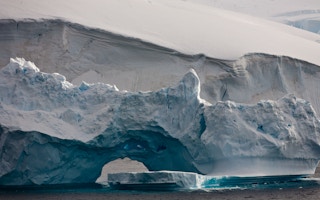Antarctica glaciers melting because of global warming may push up sea levels faster than previously believed, potentially threatening megacities including New York and Shanghai, researchers in Germany said.
Antarctica’s ice discharge may raise sea levels as much as 37 centimeters (14.6 inches) this century if the output of greenhouse gases continues to grow, according to a study led by the Potsdam Institute for Climate Impact Research.
The increase may be as little as 1 centimetre, they said.
“This is a big range, which is exactly why we call it a risk,” Anders Levermann, the study’s lead author, said in a statement. “Science needs to be clear about the uncertainty so that decision-makers at the coast and in coastal megacities can consider the implications in their planning processes.”
Related: Bet Against the Seven Horsemen of the Apocalypse
“
Science needs to be clear about the uncertainty so that decision-makers at the coast and in coastal megacities can consider the implications in their planning processes
Anders Levermann, researcher, Potsdam Institute for Climate Impact Research
The Antarctic ice sheet contains enough water to raise sea levels by over 58 meters (190 feet) though even at the current rate of warming it would take thousands of years to melt, according to the United Nations.
The southern continent contributed on average about 0.3 millimeters per year to sea-level rise from 1993 through 2010 — or about 10 per cent of the yearly total, the UN says. NASA said in May that the glacier melt in the Amundsen Sea region of Western Antarctica may have become “unstoppable”.
‘Significantly higher’
In the US, climate change has moved up the political agenda after President Barack Obama made cutting climate-warming emissions a central goal of his second term.
The Potsdam institute’s projections for this century’s sea level contribution are “significantly higher” than the latest upper-end projections from the Intergovernmental Panel on Climate Change, it said.
A global push to save the planet
Even a scenario with ambitious climate policies to cap warming to 2 degrees Celsius (3.6 degrees Fahrenheit) since industrialization, the contribution of Antarctica to global sea level rise covers a range of 0 to 23 centimeters, it said.
The 2-degree threshold has been agreed on as a target by 194 nations involved in climate treaty talks and compares with the current trajectory that the United Nations predicts will lead to warming of at least 3.7 degrees Celsius.
“Earlier research indicated that Antarctica would become important in the long term,” Levermann said. “But pulling together all the evidence, it seems that Antarctica could become the dominant cause of sea level rise much sooner.”










